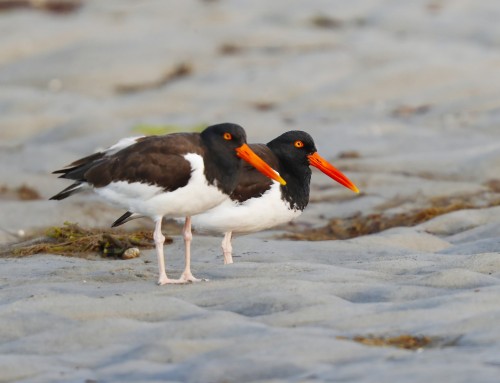Feb. 9, 2024: While taking a recent walk around Bourne Farm, had great looks at a White-throated Sparrow. This long-tailed Sparrow has distinctive field marks including a white-striped head pattern, a contrasting white throat and gray breast. This time of year, often found in woods and forest edges, thickets, and shrubby fields.
White-throated sparrows are migratory birds found in New England. Their migratory habits are characterized by seasonal movements between breeding and wintering grounds.
1. Breeding Season (Spring/Summer):
– In the spring, typically around April or May in New England, white-throated sparrows arrive at their breeding grounds. These breeding grounds are primarily located in boreal and mixed forests across Canada and the northern United States, including parts of New England.
– During the breeding season, white-throated sparrows establish territories, build nests, and breed. They prefer shrubby areas within forests, often nesting close to the ground or in low vegetation.
2. Migration (Fall):
– White-throated sparrows begin their fall migration around late September to early October. During this time, individuals from New England and surrounding areas start their journey southward.
– They typically migrate at night, using the stars for navigation. Many migratory birds, including white-throated sparrows, are known for their impressive nocturnal flights.
– Their migratory path from New England often leads them southwards, with some populations traveling to the southeastern United States, while others may travel further to wintering grounds in the southern United States or even into Mexico.
3. Wintering Grounds (Winter):
– By late fall or early winter, white-throated sparrows reach their wintering grounds. These wintering grounds can vary but often include areas with milder climates compared to their breeding grounds.
– In winter, white-throated sparrows can be found in a variety of habitats, including forests, scrublands, and gardens. They are known to frequent bird feeders in residential areas during this time.
4. Spring Migration (Spring):
– As winter transitions to spring, typically around March or April, white-throated sparrows begin their northward migration back to their breeding grounds.
– The return migration follows a similar pattern to the fall migration, with individuals traveling northward to their breeding grounds in New England and other northern regions.
Overall, the migratory habits of white-throated sparrows in New England are characterized by seasonal movements between breeding and wintering grounds, with migration occurring in the fall and spring. Their migration is an impressive feat that allows them to take advantage of seasonal resources and habitats throughout the year.





Leave A Comment
You must be logged in to post a comment.